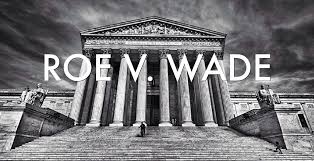The Supreme Court (Roe v. Wade Series Part 1)

Roe v Wade is the landmark Supreme Court decision that legalized abortion. It has been controversial since it was first decided in 1973.
February 8, 2019
Recently, Roe v. Wade, the landmark Supreme Court case that extends abortion rights to women, is coming under turmoil due to executive and national dissent from certain states. States like Louisiana have been attempting to pass laws that would limit abortions. Counter states like New York, have been fighting for more rights in regards to this issue. The country is polarized in this matter, which is why the Supreme Court has the potential of revisiting this issue in the future. However, due to the recent Supreme Court judge, Brett Kavanaugh, Roe v. Wade is expected to get threatened like never before, and as a result, women could possibly have a very small amount of control on what they wish to do with their bodies.
Actions take by states to show their disapproval of the 1973 landmark case has been noticed throughout the country. States like Tennessee have introduced a bill that would ban abortion in the state if the Supreme Court did not overturn its ruling. Similarly, in South Carolina, state lawmakers have introduced legislation that would ban abortion as well. They all share the same goal of “establishing the right to life.” However, exceptions are also being made in states like Arkansas where abortion is only legal if it is necessary to prevent the death of a mother.
More blue states like New York have been fighting these other legislations through their own policies. On January 22nd, the Governor of New York passed the Reproductive Health Act, which permits abortion after the 24th week of pregnancy when there is “an absence of fetal viability or when the abortion is necessary to protect the patient’s life or health,” according to The New York Times. On the other hand, States like California, Maryland, and Connecticut (to name a few) have laws in place that permit abortion before the fetus’s viability or when the procedure is necessary to protect the mother’s health.
This three-part series focuses on Roe v. Wade, a Supreme Court case, that is undergoing turmoil. In part 2 of this series, I will discuss both sides of the argument in this case, and paint a picture of what life for women would look like if it were to be overturned. In part 3 of this series, I will conduct interviews with Pinole Valley High School’s AP Government teacher and local girls to see the impact it is having in our local community.

